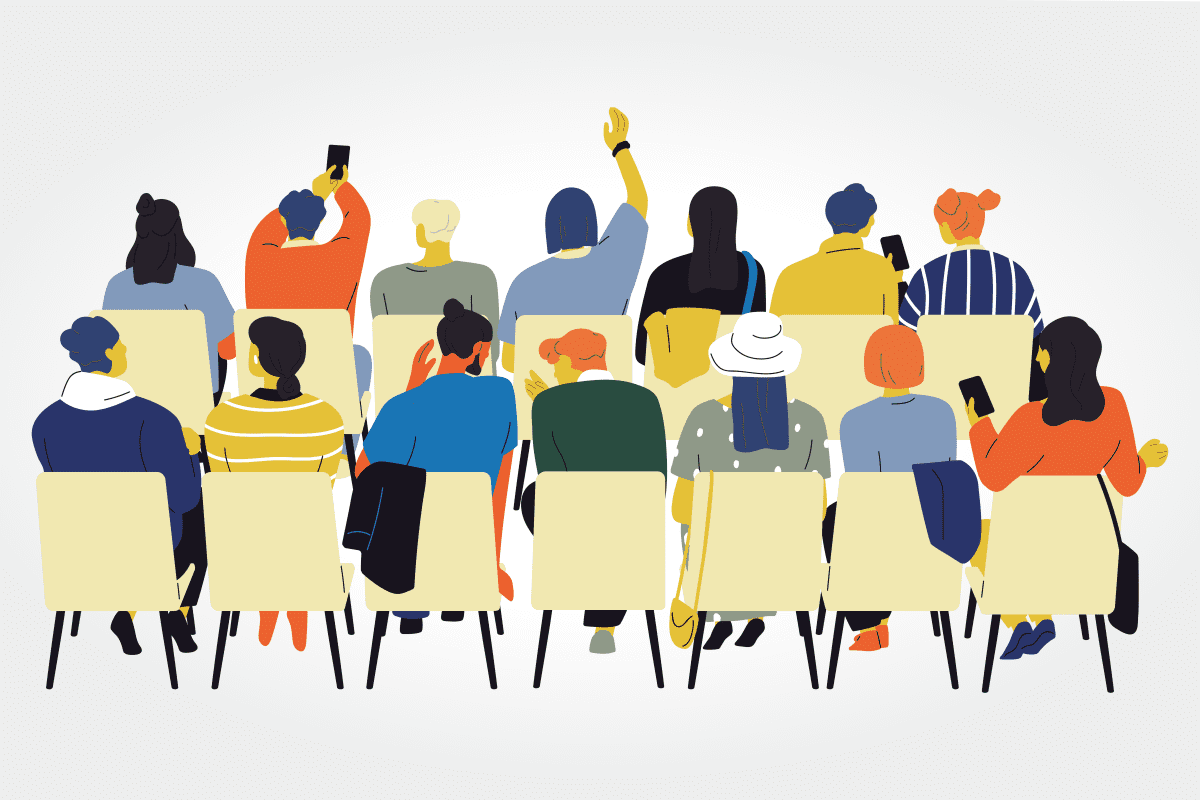As Mick Jagger might say, ‘You can’t always get what you want,’ but with the right event seating strategy, you just might find you get what you need.
From facilitating engagement to ensuring every participant has a good view, the event seating strategy you choose can significantly influence the success of your event. This comprehensive guide explores eight popular seating configurations, discussing their benefits and ideal uses. It’s a must-read for event management professionals, offering valuable insights to maximize engagement and achieve their event objectives effectively.
Maximize the Impact with Strategic Seating
Event planners have a significant responsibility when selecting a seating arrangement that meets their event’s needs. The seemingly small detail of chair and table setup can make a substantial difference in attendee comfort and accessibility, directly influencing their overall event experience.
Factors such as the type of event, the number of attendees, and the event’s purpose should determine the seating arrangement choice. For instance, a workshop may benefit from a classroom-style seating arrangement with rows of chairs facing the presenter. At the same time, a networking event may require a more relaxed arrangement with smaller round tables. Ultimately, the corporate event planner aims to create an environment that fosters engagement, collaboration, and learning while ensuring the attendees’ enjoyment.
“Choosing the right seating arrangement can transform an event from ordinary to extraordinary, significantly boosting engagement and interaction,” –Christine Hilgert, CMP
Classic Event Seating Strategy: Auditorium Style
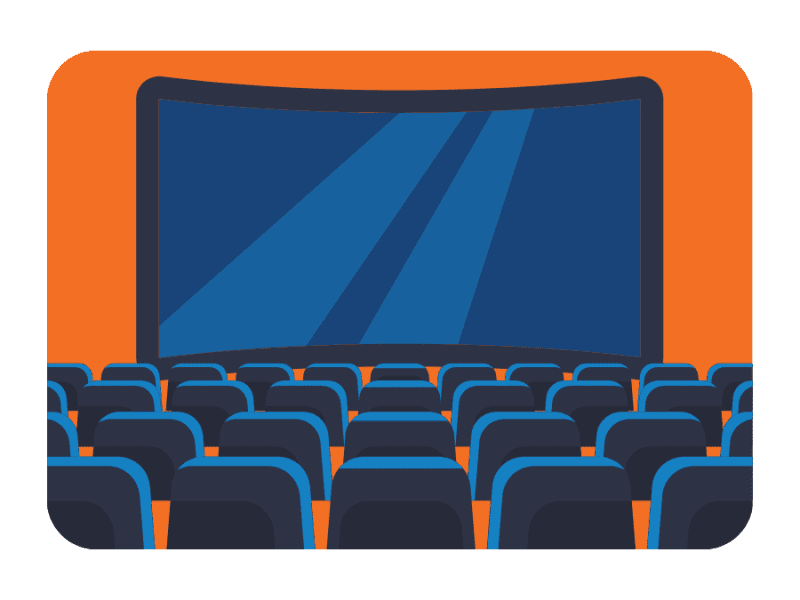
Auditorium seating arranges chairs in rows facing a stage or focal point, optimizing space and focusing attention on presentations or performances.
Pros
- Maximizes space usage, allowing large audiences to attend
- Excellent for events focused on stage presentations
Cons
- Limited interaction among attendees
- Difficult for attendees to take notes if no tables are present
Best for
- Large-scale presentations
- Keynote speeches
- Ceremonies
Social Event Seating Strategy: Banquet Style

Banquet style features round tables that accommodate groups of guests, commonly used for meals and social interactions at gala events or conference celebrations.
Pros
- Facilitates meal service and face-to-face interactions
- Ideal for gala dinners and award nights
Cons
- Only suitable for some types of presentations, especially if visibility of a central stage is required
- Larger space required to accommodate tables
Best for
- Social gatherings
- Celebratory events
Intimate Discussion Event Seating Strategy: Boardroom Style
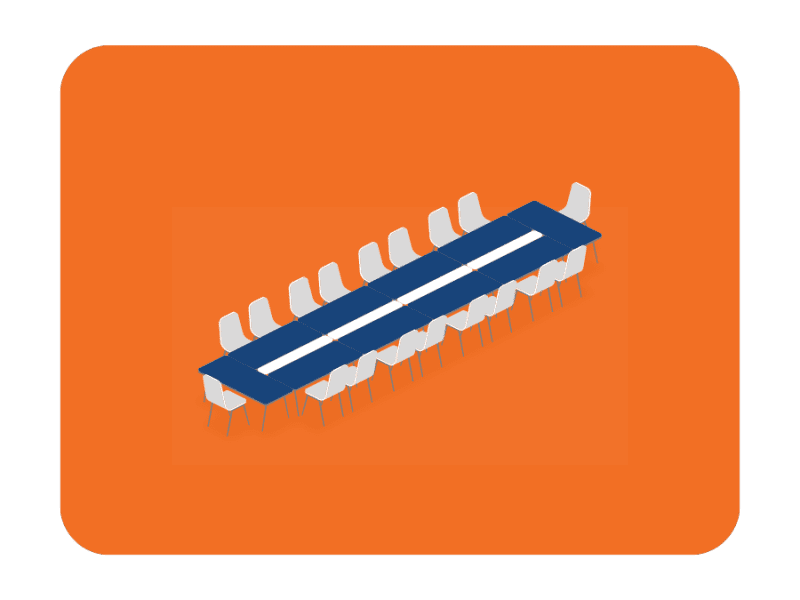
A boardroom setup involves a large central table with chairs on all sides, ideal for meetings, discussions, and decision-making processes where everyone can see each other.
Pros
- Encourages open discussion and interaction among all participants
- It is ideal for small groups that need to communicate and make decisions collectively
Cons
- Limited seating capacity, unsuitable for large groups
- Participants are seated close together, which might not be ideal for situations requiring workspace
Best for
- Meetings
- Interviews
- Group discussions
Engaging Event Seating Strategy: Cabaret Style
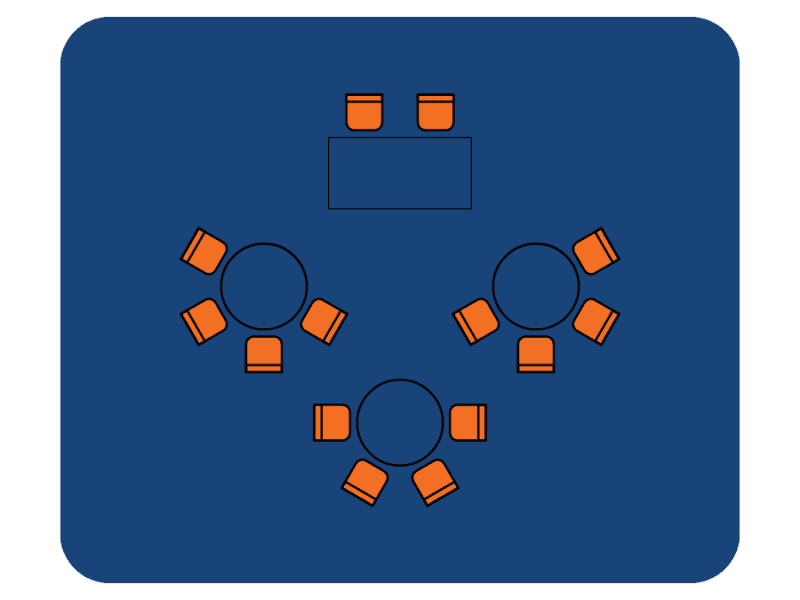
Cabaret-style seats attendees at scattered round tables facing the front, with an open end that ensures everyone has a clear view of the stage. This style blends networking and small talk with presentation visibility.
Pros
- Attendees are seated in an arc facing the stage, centralizing the presentation
- Great for workshops and events with food and drink
Cons
- Reduced seating capacity at each table to maintain visibility – best for small, exclusive groups
- May require more space than classroom or theater styles
Best for
- Interactive conferences
- Small presentations
- Corporate dinners
Educational Event Seating Setup: Classroom Style
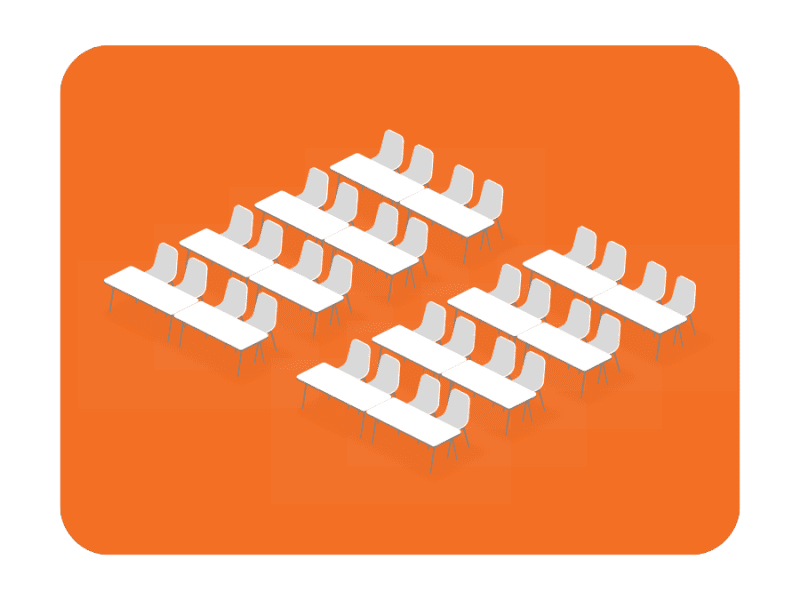
In a traditional classroom setup, rows of tables with chairs face the front. This arrangement is ideal for sessions where attendees must take notes, use a computer, or follow a presentation.
Pros
- Ideal for educational sessions where attendees need to take notes
- Easy to set up and familiar to most participants
Cons
- Interaction with other attendees is limited
- Some participants may have a restricted view if seating is not staggered
Best for
- Training sessions
- Workshops or labs
- Lectures
Collaborative Event Seating Strategy: Hollow Square Style

The hollow square consists of tables arranged in a square (or rectangle), with an open center space, encouraging interaction and dialogue among participants seated facing each other.
Pros
- Suitable for facilitation and interaction within the group
- Everyone faces each other, which is ideal for open discussions and collaborative sessions
Cons
- Not practical for larger groups due to space and visibility constraints
- It is not suited for events where the focus is on a single speaker or presentation
Best for
- Board meetings
- Team briefings
- Small group discussions
Interactive Event Seating Strategy: U-Shaped Style
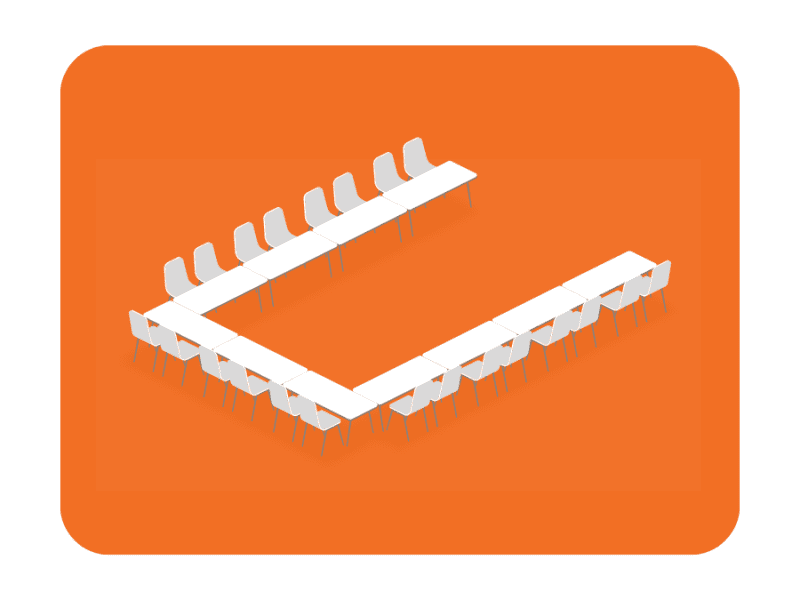
U-shaped seating arranges tables in a U shape with open ends facing the front, facilitating engagement with a speaker and among attendees, suitable for workshops and discussions.
Pros
- Facilitates interaction with the presenter and among attendees
- Allows presenter to engage closely with each participant
Cons
- Not efficient for larger groups; best for groups of 30 or less
- Requires a large room to accommodate the setup
Best for
- Workshops
- Group discussions
- Training sessions where attendee participation is expected
Dynamic Event Seating Configuration: Chevron or V-Shaped
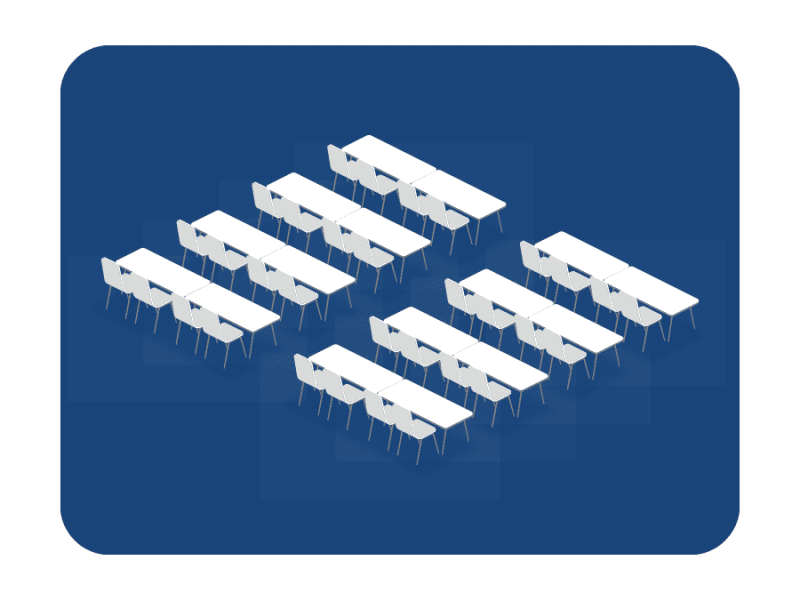
Chevron or V-shaped seating aligns chairs in V formations or angled rows pointing towards the speaker, improving sightlines and facilitating a more engaging setup than traditional straight rows.
Pros
- All attendees are angled toward the speaker, improving sightlines
- Facilitates greater engagement than straight rows
Cons
- Space between rows can reduce overall capacity
- Setup can be complex and may require more setup time
Best for
- Medium-sized educational sessions
- Board training courses
- Seminars where engagement is a priority
Did You Know?
Studies indicate that strategic seating can increase attendee interaction by up to 30%. Seating arrangements promoting face-to-face interactions, such as circular or cabaret styles, are particularly effective in enhancing event networking opportunities.
Tailoring Seating for Event Success
Each seating arrangement has its own advantages and challenges, and the right choice depends on your event’s audience and needs. Event holders can enhance their gatherings’ effectiveness and enjoyment by carefully considering these event coordination strategies.
The right seating setup meets functional requirements and enhances communication, learning, and overall attendee satisfaction, ensuring that every event is as successful as possible.


